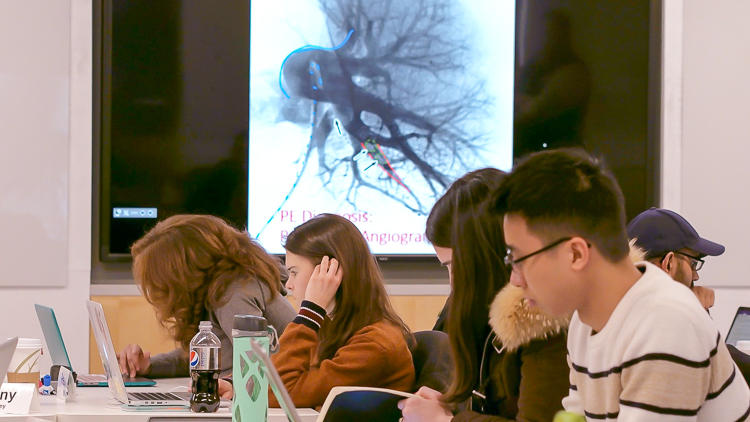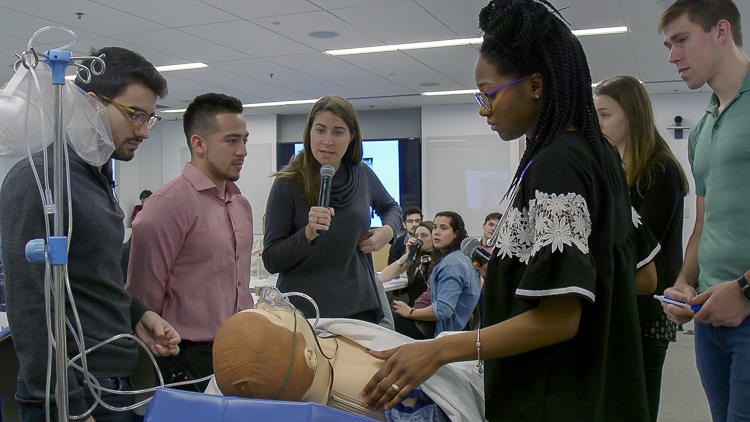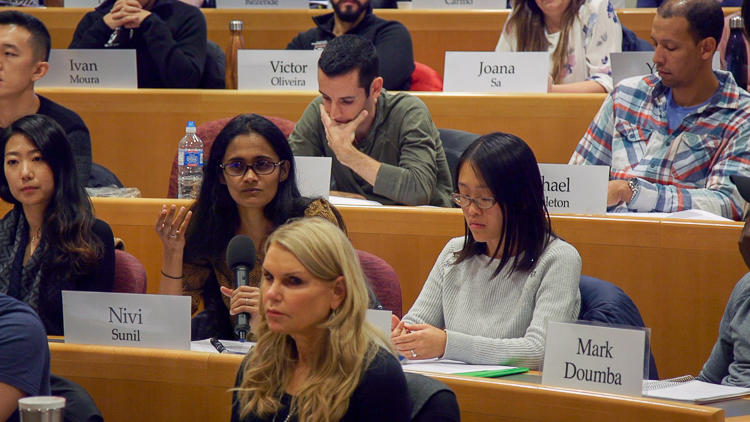When disciplinary knowledge is presented only in the abstract, students miss a critical opportunity to understand how this knowledge can be applied to solve professional dilemmas. In Barbara Cockrill’s Case-Based Collaborative Learning (CBCL) classroom, students study key medical concepts on their own and then work together in class to apply this knowledge to realistic scenarios they are likely to see in future practice. As a result, students gain a storehouse of contextual knowledge, real-world clarifications of concepts, and practice solving professional puzzles.
Using Cases in the Case-Based Collaborative Learning Classroom
Instructor
Barbara Cockrill, Harold Amos Academy Associate Professor of Medicine
Student Group
Graduate
School
Harvard Medical School
Course
Homeostasis I
Group Size
40 students
Additional Details
First-year requisite
- Find opportunities to “flip” your classroom. Require students to cover required didactic content at home so class time can be devoted to applying that material in meaningful ways.
- Identify and share realistic vignettes of how course material is used in practice, as these may help students better understand and visualize otherwise abstract concepts.
- All disciplines are expansive and this can be overwhelming to students. Rather than covering a vast quantity of information in a course, consider focusing on fewer concepts and asking students to apply them repeatedly to achieve in-depth understanding.
- Sudzina describes the constructivist underpinnings of case-based teaching (1997).
- Research conducted by Krain confirms increased recall and deeper theoretical and conceptual understanding when using case-based materials in a pre- and post-test (2016)
- Case-based teaching is correlated to learning gains and increases in performance gains in undergraduates in biology (Bonney, 2015).
- This article on "Making the Case" describes why teaching with cases can be such a powerful way to blend theory and practice in a variety of disciplines
- The University of Illinois offers an overview article describing the why and how of case-based teaching
- Considering implementing case-based teaching? This webpage from Harvard Business School provides tips for instructors who are new to case-based teaching




